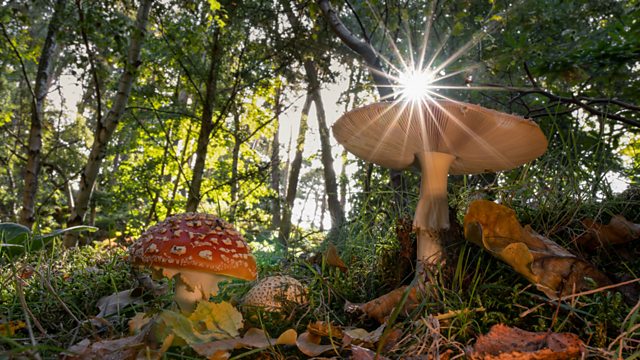Autumnwatch 2020 episode 3: Chris catches up with a mob of hungry teenage white-tailed eagles, released on the Isle of Wight.
Live from their different bases in England, Scotland and Wales, Chris Packham, Michaela Strachan, Gillian Burke and Iolo Williams find out how to connect with nature this autumn. Chris catches up with a mob of hungry teenage white-tailed eagles, released on the Isle of Wight, and shares the surprising science that reveals exactly why getting out into nature is good for us, whatever the weather.
BBC’s popular wildlife programme records the changes in nature across four days in autumn, using a network of cameras to track the action in real time, including never-filmed-before behaviour, as animals prepare for their toughest time of the year. Presenters anchor `Autumnwatch’ from a different base each year, and camera teams are spread throughout the UK, showcasing the beauty of iconic wild places and revealing new and surprising wildlife stories as they happen.
Autumnwatch 2020 episode 3
Isle of Wight
The Isle of Wight is a county and the largest and second-most populous island in England. It is in the English Channel, between two and five miles off the coast of Hampshire, separated by the Solent. The island has resorts that have been holiday destinations since Victorian times, and is known for its mild climate, coastal scenery, and verdant landscape of fields, down land and chines. This island is designated a UNESCO Biosphere Reserve.
The island has been home to the poets Algernon Charles Swinburne and Alfred, Lord Tennyson and to Queen Victoria, who built her much-loved summer residence and final home Osborne House at East Cowes. It has a maritime and industrial tradition including boat-building, sail-making, the manufacture of flying boats, the hovercraft, and Britain’s space rockets. The island hosts annual music festivals including the Isle of Wight Festival, which in 1970 was the largest rock music event ever held. It has well-conserved wildlife and some of the richest cliffs and quarries for dinosaur fossils in Europe.
The isle was owned by a Norman family until 1293 and was earlier a kingdom in its own right, Wihtwara. In common with the Crown dependencies, the British Crown was then represented on the island by the Governor of the Isle of Wight until 1995. The island has played an important part in the defence of the ports of Southampton and Portsmouth, and been near the front-line of conflicts through the ages, including the Spanish Armada and the Battle of Britain. Rural for most of its history, its Victorian fashionability and the growing affordability of holidays led to significant urban development during the late 19th and early 20th centuries.
Historically part of Hampshire, the island became a separate administrative county in 1890. It continued to share the Lord Lieutenant of Hampshire until 1974, when it was made its own ceremonial county. Apart from a shared police force, and the island’s Anglican churches belonging to the Diocese of Portsmouth (originally Winchester), there is now no administrative link with Hampshire; although a combined local authority with Portsmouth and Southampton was considered, this is now unlikely to proceed.
